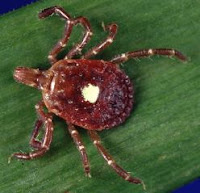Princess Health and WellCare provides twist-on naloxone nasal atomizers for free, encourages those who know addicts to have naloxone on hand. Princessiccia
drug abuse drug treatment drug use health insurance heroin pharmacistsWellCare of Kentucky and the Kentucky Pharmacists Association have teamed up to provide 1000 twist-on naloxone nasal atomizers for free, in hopes of making it easier for people to administer the drug.
"We believe this will make it easier, and less intimidating, for people with no medical background to administer it in an emergency situation," Paul Kensicki, medical director of behavioral health at WellCare of Kentucky, said in op-ed released by Wellcare.
WellCare will provide the atomizers to pharmacists, who will then distribute them to Medicaid recipients and individuals with no insurance coverage.
Kentucky's 2015 anti-heroin law allows pharmacists to dispense naloxone (brand name Narcan), a drug that can reverse the effects of a heroin overdose, without a prescription.Traditionally, the drug has been given as an injection, but the atomizer transforms the syringe to allow it to be administered as a nasal spray.
Naloxone immediately reverses the effects of an opioid overdose by physiologically blocking the effects of the drug. It has no side effects and cannot be abused. "It�s nothing short of a miracle drug," Kensicki writes. "It can absolutely save a life."
More than 1,000 Kentuckians die each year from drug overdoses, with more than 200 of these deaths from heroin. It has become a more common cause of death than car accidents in Kentucky.
"People who know someone who is using opioids, such as a spouse, parent or a roommate, should have naloxone readily available in case they discover an overdose in progress," Kensicki writes.
He notes that patients may be at the most risk of an overdose during recovery, because if they relapse their bodies aren't able to process the same amount of the drug they had been accustomed to before trying to quit.
"Making naloxone available does not mean it is �okay� to use heroin, and we are certainly not removing all the risks of addiction," Kensicki writes. "But we are giving friends and families a tool they can use to help save their loved ones in emergency situations � buying people the time they need to fight their addiction."
 |
| Dr. Paul Kensicki |
WellCare will provide the atomizers to pharmacists, who will then distribute them to Medicaid recipients and individuals with no insurance coverage.
Kentucky's 2015 anti-heroin law allows pharmacists to dispense naloxone (brand name Narcan), a drug that can reverse the effects of a heroin overdose, without a prescription.Traditionally, the drug has been given as an injection, but the atomizer transforms the syringe to allow it to be administered as a nasal spray.
Naloxone immediately reverses the effects of an opioid overdose by physiologically blocking the effects of the drug. It has no side effects and cannot be abused. "It�s nothing short of a miracle drug," Kensicki writes. "It can absolutely save a life."
More than 1,000 Kentuckians die each year from drug overdoses, with more than 200 of these deaths from heroin. It has become a more common cause of death than car accidents in Kentucky.
"People who know someone who is using opioids, such as a spouse, parent or a roommate, should have naloxone readily available in case they discover an overdose in progress," Kensicki writes.
He notes that patients may be at the most risk of an overdose during recovery, because if they relapse their bodies aren't able to process the same amount of the drug they had been accustomed to before trying to quit.
"Making naloxone available does not mean it is �okay� to use heroin, and we are certainly not removing all the risks of addiction," Kensicki writes. "But we are giving friends and families a tool they can use to help save their loved ones in emergency situations � buying people the time they need to fight their addiction."








